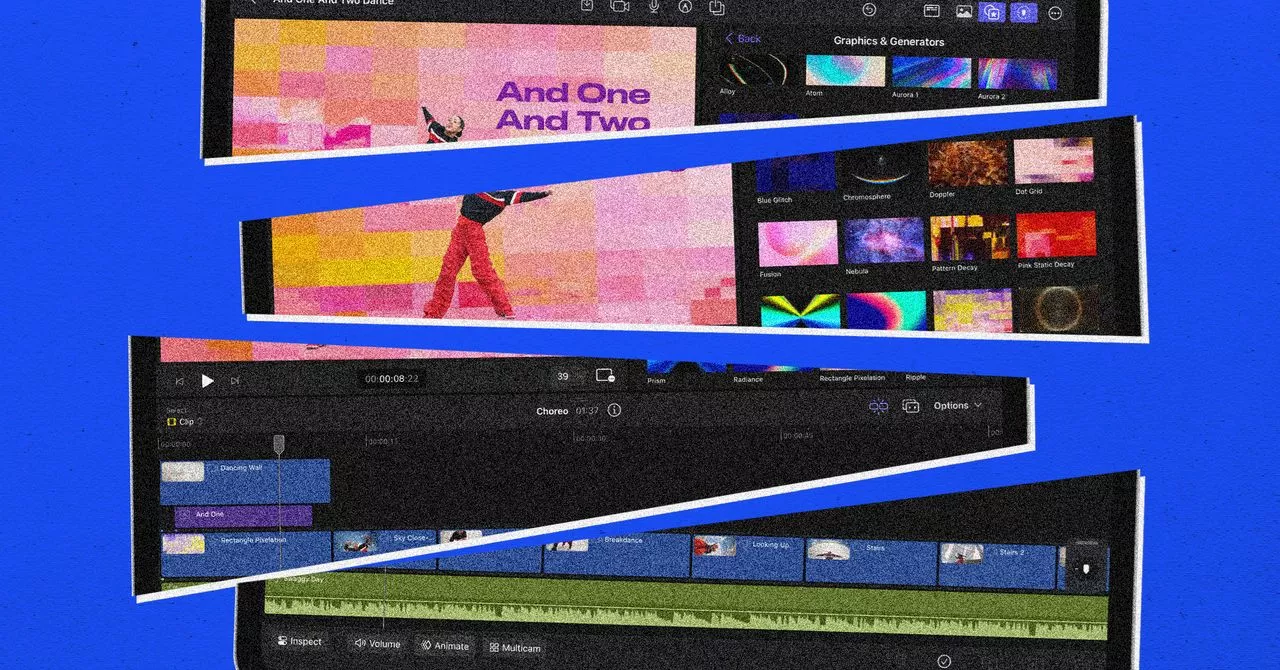This article explores the iPad's journey from its initial conception as a unique device category to its current state. It analyzes the tensions that arose between its original vision of a simplified, consumption-focused device and the growing demands for productivity and versatility.
When Steve Jobs first unveiled the iPad in 2010, it was presented as a “third category” of device, something existing between a smartphone and a laptop. For this category to justify its existence, Jobs declared it needed to excel in specific key tasks. He listed browsing the web, managing emails, watching videos, listening to music, playing games, reading ebooks, and enjoying photos. Ironically, these were the very things the iPad was truly good at.
Emphasizing the distinct nature of the tablet experience, the original demo showcased Jobs using his iPad not at a desk but while relaxing in a chair. “Using this thing is remarkable,” he remarked about the iPad. “It’s so much more intimate than a laptop, and so much more capable than a smartphone with its gorgeous large display. Holding the internet in your hands is an incredible experience.” Naturally, this assumed you didn’t intend to do much beyond reading. Therefore, this device was designed to be focused, elegant, and simple, excelling at passive media consumption, surpassing both a phone or laptop in that regard. However, even during that demonstration, hints of the future tension began to emerge. A Brush With the Future During the presentation, Steve Sprang, the creator of Brushes, took to the stage and suggested the iPad could transcend the consumption-focused narrative: “Artists have already done amazing things with the iPhone, and I think with this larger screen they’re going to have a true portable paint studio.” Apple itself introduced touch-optimized—though noticeably simplified—versions of its iWork office suite. The problems surfaced when users started employing these apps. Sprang’s Brushes was delightful; it looked stunning. The expanded canvas offered ample room for creativity. But artists yearned for input options beyond their fingertips. This contradicted Jobs’ dismissive comment about other tablet makers: “If you see a stylus, they blew it.” As for iWork? You could quickly sketch out the framework of a document or presentation while lounging on the sofa, then transmit it to your Mac for completion. However, attempting meaningful productivity solely on the iPad proved cumbersome. In an effort to simplify computing and streamline, Apple had pared things down to the bare essentials. The interaction felt overly rigid, and the absence of a system-wide file manager—a Finder for iPad—meant files were isolated within apps, duplicated as you moved between them, and impossible to track effectively. It's possible that Apple underestimated how rapidly users would demand more from the iPad than basic tasks and media consumption, or how frustrating it would be to lack access to computing norms like traditional multitasking or a user-accessible file system. Apple quickly learned this lesson.The iPad initially enjoyed phenomenal sales. Yet, its position between two established categories began to unravel, not to the point of being a complete failure, but the initial meteoric sales trajectory plateaued and subsequently declined. As Apple scrambled to revitalize faltering sales, the initial focused iPad vision gradually faded. Apple’s Awkward Middle Child The problem lay in the fact that the iPad resided between two already established and crucial device categories, but it couldn't effectively replace either. Smartphones were rapidly becoming indispensable, while the iPad existed as a pleasant-to-have. Apple’s commendable build quality meant iPads endured for years. Most people rarely felt the urge to upgrade because their initial iPad efficiently handled their needs, which often weren't extensive. Nevertheless, a vocal group—individuals who desired to work on an iPad and might prefer a tablet over a laptop—grew increasingly frustrated. The iPad garnered a reputation. It was occasionally exceptional for performing single tasks at a time, proving useful when focusing was paramount. But when more complex needs arose, its limitations became apparent. Apple responded with the iPad Pro, which boasted more processing power than many knew what to do with. The original iPad debuted at $499, a price Jobs argued would make it accessible to a wide audience. The Pro, however, was priced akin to a Mac while still operating on a software designed for navigating web pages, flipping through photos, and casual finger-painting. Simultaneously, Apple introduced the Apple Pencil—an Apple stylus. Had Apple “blown it” by this point? Not entirely, because the iPad didn't necessitate a stylus and offered a solution for users requiring precise input. However, it signified a clear departure from the original vision, a seemingly tacit admission that users might desire more than a supersized iPhone. Yet, Apple also held back, hesitant to risk cannibalizing Mac sales. Instead of empowering the iPad to evolve into the device it aspired to be, Apple opted to smooth the transition between devices, leaving both casual and power users in a peculiar state of limbo. Between a Mac and a Hard Place Each subsequent year, the iPad diverged further from Jobs’ original vision while still failing to fully satisfy users. Apple introduced complexity for everyday users and continuously reinvented the wheel, leaving power users perpetually wanting more. Focus eroded, replaced by confusion. Apple insisted the iPad wasn't a laptop replacement, then released a magnetic keyboard that rendered it indistinguishable from one
Ipad Apple Steve Jobs Tablet Productivity Consumption Evolution Technology
United States Latest News, United States Headlines
Similar News:You can also read news stories similar to this one that we have collected from other news sources.
 Chicago's evolving real estate landscape: How to be a smart consumerFor the first time since 2013, there are 34% more home sellers than there are home buyers nation- wide, according to a new report by Redfin.
Chicago's evolving real estate landscape: How to be a smart consumerFor the first time since 2013, there are 34% more home sellers than there are home buyers nation- wide, according to a new report by Redfin.
Read more »
 How K-pop Stars Tomorrow X Together Are Evolving With ‘The Star Chapter: Together’The five-member boy group returns with their fourth studio album, which closes one chapter and opens another: “The reason why we're wrapping [this album series] is because we’ve had a lot of growth.”
How K-pop Stars Tomorrow X Together Are Evolving With ‘The Star Chapter: Together’The five-member boy group returns with their fourth studio album, which closes one chapter and opens another: “The reason why we're wrapping [this album series] is because we’ve had a lot of growth.”
Read more »
 Jets and Giants hand Wilson and Fields the keys to evolving offensesAs NFL training camps began this week, the Jets — under new head coach Aaron Glenn, formerly the Detroit Lions' defensive coordinator.
Jets and Giants hand Wilson and Fields the keys to evolving offensesAs NFL training camps began this week, the Jets — under new head coach Aaron Glenn, formerly the Detroit Lions' defensive coordinator.
Read more »
 Major Connecticut hospitals begin 'winding down' youth gender programs citing 'evolving landscape'Connecticut Children’s Medical Center and Yale New Haven Health sent out statements saying that they will be ending their gender treatments for youth patients.
Major Connecticut hospitals begin 'winding down' youth gender programs citing 'evolving landscape'Connecticut Children’s Medical Center and Yale New Haven Health sent out statements saying that they will be ending their gender treatments for youth patients.
Read more »
 Evolving ETH futures data hints a potential rally to $5KCan ETH price Hit $5,000 anytime soon? The data says yes.
Evolving ETH futures data hints a potential rally to $5KCan ETH price Hit $5,000 anytime soon? The data says yes.
Read more »
 Physicians With Obesity Reflect on Bias, Stigma, and Their Evolving Clinical ApproachHow three physicians’ own weight struggles reshape patient care, challenge bias, and push systemic change in treating obesity as a chronic disease.
Physicians With Obesity Reflect on Bias, Stigma, and Their Evolving Clinical ApproachHow three physicians’ own weight struggles reshape patient care, challenge bias, and push systemic change in treating obesity as a chronic disease.
Read more »
